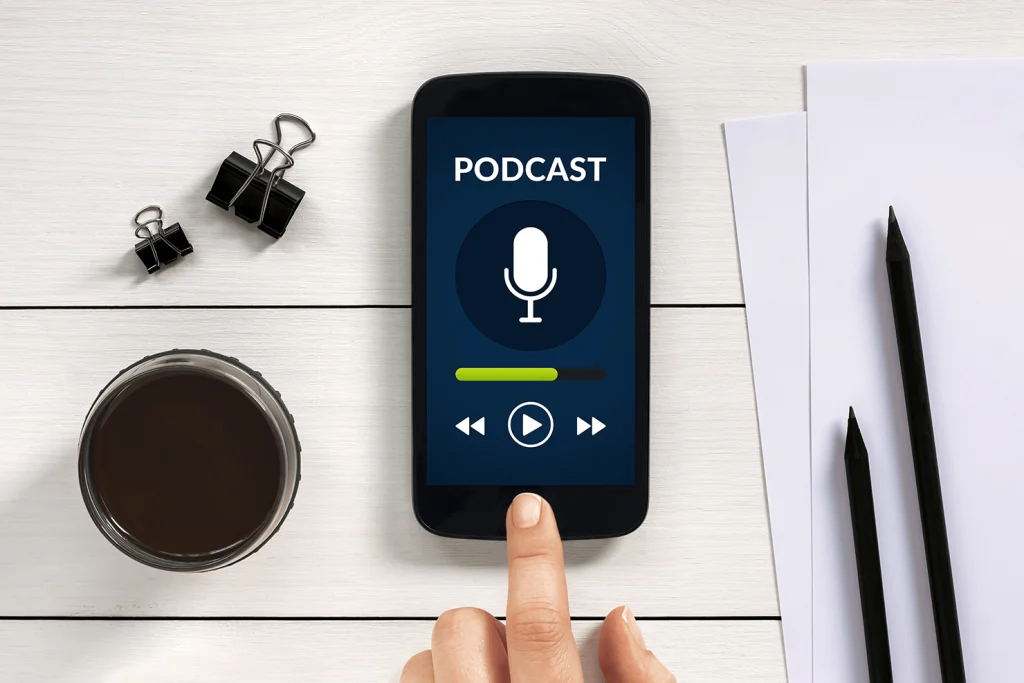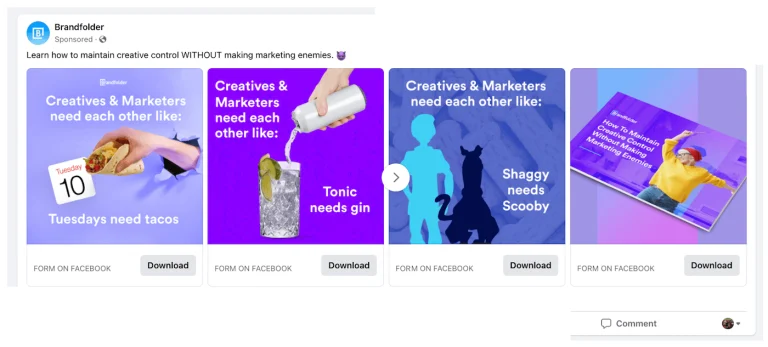Follow These Steps to Build a Successful Podcast Membership Program

Over the past few years, I’ve watched several podcasting colleagues transform their shows from passion projects into sustainable businesses through membership programs.
The results have been impressive: one friend went from zero recurring revenue to thousands of dollars monthly within eight months, while another built a membership that now supports her full-time podcasting efforts.
If you’ve been podcasting consistently and have built an engaged audience, a membership program might be exactly what you need to monetize your expertise while deepening listener relationships.
The process isn’t complicated, but it requires strategic thinking and consistent execution. Based on what I’ve observed from successful podcast membership launches, here are the steps that consistently produce results.
Step 1: Choose Your Membership Model
The membership model you select determines everything else about your program. I’ve seen podcasters struggle when they try to offer too many options initially, which confuses potential members and complicates management.
The most successful launches start simple and add complexity gradually.
- Tiered memberships work well for podcasters with diverse content who want to appeal to different budget levels. One colleague launched with three tiers: a basic level at $5 monthly that included bonus episodes, a standard level at $15 with additional Q&A access, and a premium level at $30 that included everything plus monthly group calls. This approach captured members across different income levels while providing clear upgrade paths.
Pro Tip: Start with just two tiers to avoid overwhelming potential members. You can always add more complexity later once you understand your audience’s preferences.
- All-inclusive memberships simplify both management and marketing messages. Instead of explaining multiple tiers, you offer one membership that includes everything exclusive you create. This model works particularly well for podcasters with consistent content styles who want to focus on building one strong community rather than managing multiple access levels.
- One-time payment models can work for specific content collections or lifetime access offers, but the podcasters I know have found them less effective for ongoing support. Members tend to engage less when they’ve made a single payment compared to those who invest monthly in continued success.
Your choice should align with both your content creation style and your audience’s preferences. If you naturally create lots of different types of content, tiers might work well. If you prefer focusing on one type of exclusive offering, an all-inclusive model will serve you better.
Step 2: Define Your Membership Perks
This step determines whether your membership program succeeds or fails. The perks you offer must provide genuine value that regular listeners can’t get anywhere else.
I’ve watched several podcasters struggle initially because their exclusive content was essentially just extended versions of regular episodes. The response was lukewarm because they weren’t offering anything truly different.
- Exclusive episodes become the strongest membership drivers when they offer completely different formats from regular content. One successful podcaster creates “Coffee Chat” episodes where she discusses industry insights more casually, and “Behind the Business” episodes where she shares specific strategies and challenges. These episodes feel more personal and provide actionable information that doesn’t fit her regular show format.
- Ad-free versions might seem like a simple perk, but they’re incredibly valuable to listeners who consume lots of podcast content. The implementation is straightforward, and it immediately improves the listening experience for paying members.
Member Feedback: “The ad-free episodes alone are worth the membership cost. I can finally listen during my commute without constantly reaching for the skip button.”
- Early access works particularly well for podcasters with time-sensitive content or those who frequently reference current events. One friend gives members 48-hour early access to regular episodes, which seems small but creates a sense of insider status that members genuinely appreciate.
- Live Q&A sessions have transformed how several podcasters connect with their audiences. These monthly sessions let members ask questions directly and create content based on their specific interests. The sessions also generate additional content ideas for future episodes, making them valuable for both members and overall content strategy.
- Merchandise and course discounts work well if you already have other products, but avoid creating products just to offer member discounts. Focus on content-based perks first, then add product discounts as secondary benefits.
Step 3: Select Your Membership Platform

Platform selection affects every aspect of your membership program, from payment management ease to how members access content.
I’ve watched my colleagues test different platforms extensively, and each has distinct advantages and limitations.
- Patreon remains the most popular choice for good reason. The platform handles payment processing, provides excellent analytics, and offers built-in communication tools. The tiered membership system is intuitive, and most potential members already understand how Patreon works. However, Patreon takes a percentage of revenue, and you’re building your membership on someone else’s platform.
- Supercast has impressed several podcasters with its seamless podcast app integration. Members can access premium content through their favorite podcast app rather than logging into a separate platform. This reduces friction significantly and improves the member experience. The platform works particularly well when exclusive content consists primarily of audio episodes.
Integration Benefit: One podcaster reported that members listened to exclusive content 40% more frequently when it was available through their regular podcast app compared to a separate platform.
- Memberful offers more control and customization options, especially for podcasters who want to integrate membership directly into existing websites. You maintain ownership of member relationships and data, which becomes increasingly important as membership grows. The setup requires more technical knowledge, but the long-term benefits often justify the initial complexity.
- Glow.fm specializes in premium podcast feeds and works excellently for audio-focused memberships. The platform creates private RSS feeds that work with any podcast app, making the member experience seamless. However, it’s less suitable for non-audio perks or community building features.
Consider your technical comfort level, the types of content you plan to offer, and how much control you want over the member experience.
Most successful podcasters I know choose based on their primary content type and desired level of platform control.
Step 4: Set Your Membership Pricing
Pricing your membership correctly requires balancing perceived value with your audience’s budget reality.
I’ve seen podcasters initially price too low because they’re nervous about asking for money, then overcorrect and price too high. Finding the sweet spot takes testing and adjustment.
- Start with audience research rather than guessing about price sensitivity. One colleague surveyed her email list asking what they’d be willing to pay for specific types of exclusive content. The responses surprised her: people were willing to pay more than expected for genuine value, but they were very specific about what constituted value.
- Low-cost, high-volume strategies work well if you can create content efficiently and want to build a large member base quickly. One podcaster tested a $3 monthly membership and attracted many members, but the low price point made it difficult to justify spending significant time on exclusive content creation. Members also seemed to value the content less when the price was very low.
Pricing Psychology: One study from a successful podcast membership showed that members who pay $15 monthly engage with exclusive content 3x more than members who pay $5 monthly, even when the content is identical.
- Premium pricing allows focusing on creating exceptional value for a smaller group of highly engaged members. Several podcasters have found that $25 tiers generate more revenue with fewer members and create stronger relationships because members feel more invested in the community.
- Multiple pricing tiers can maximize revenue if implemented thoughtfully. However, avoid creating too many options, which leads to decision paralysis. Three tiers maximum, with clear differences in value between each level.
Test pricing with small groups before launching publicly. Smart podcasters offer early access to email subscribers at different price points and monitor conversion rates and engagement levels. This testing reveals optimal price points for specific audiences and content styles.
Step 5: Create Compelling Exclusive Content
The content you create for members determines whether they continue paying month after month. This is about creating different, more valuable content that justifies the membership investment.
- Bonus episodes should feel genuinely exclusive rather than like content that didn’t make it into regular shows. One option is to create “Strategy Sessions” where you dive deep into specific business tactics, and “Failure Friday” episodes where you honestly discusses mistakes and lessons learned. These formats work well because they’re more personal and actionable than the regular interview-based episodes.
- Behind-the-scenes content satisfies members’ curiosity about process and provides educational value for aspiring podcasters. Successful membership creators share preparation notes for interviews, discuss technical setup decisions, and explain content strategy choices. This content requires minimal additional production time but provides significant value to engaged listeners.
Content Planning Tip: Batch record exclusive content during regular recording sessions to maximize efficiency while maintaining quality.
- Member-only Q&A sessions create the most engagement in successful membership programs. Monthly live sessions where members can ask questions about podcast topics, business strategy, or industry insights generate content ideas for future episodes and help podcasters understand what information members find most valuable.
- Exclusive interviews with guests who might not appear on regular shows work particularly well. Several podcasters interview other creators about their strategies, industry experts about niche topics, and successful entrepreneurs about specific tactics. These conversations are more detailed and tactical than regular episodes because they’re designed for more engaged audiences.
Consistency matters more than perfection. The most successful podcasters commit to regular schedules like one exclusive episode weekly and two monthly Q&A sessions.
Regular schedules help members feel they’re receiving ongoing value and make membership fees feel justified.
Step 6: Promote Your Membership Strategically

Effective promotion feels natural rather than pushy, and it focuses on value rather than features.
I’ve watched podcasters initially be too subtle about their membership programs, assuming people would discover them organically. That approach results in very slow growth until promotion becomes more intentional.
- On-podcast promotion works best when integrated naturally into content. Successful podcasters mention memberships when discussing topics covered in more detail in exclusive episodes, when thanking members for supporting shows, or when answering questions that relate to member-only content. The key is making these mentions feel helpful rather than salesy.
- Social media promotion should focus on showcasing exclusive content rather than just announcing that membership exists. Smart podcasters share short clips from member-only episodes, post behind-the-scenes photos from recording sessions, and highlight interesting questions from Q&A sessions. This approach gives potential members previews of what they’re missing.
Social Proof Strategy: Share member testimonials and success stories to demonstrate real value and build credibility with members.
- Email newsletter promotion allows for more detailed explanations of membership benefits and exclusive content previews. Effective podcasters send monthly newsletters highlighting recent exclusive content and providing previews of upcoming member-only episodes. This approach converts better than social media because email subscribers are already more engaged with content.
- Website integration makes it easy for new listeners to discover and join membership programs. Successful podcasters create dedicated membership pages explaining benefits, showcasing member testimonials, and providing clear signup instructions. They also include membership information in podcast show notes and episode descriptions.
Promote consistently but avoid overwhelming audiences.
Most successful podcasters mention membership programs in every third or fourth episode, include them in monthly newsletters, and post about them weekly on social media. This frequency keeps programs visible without becoming annoying.
Step 7: Build a Thriving Member Community
Member engagement determines long-term success more than initial signup numbers. I’ve seen membership attempts with good initial growth but terrible retention because members didn’t feel connected to the program or each other.
- Create exclusive communication channels where members can interact with hosts and each other. Many successful podcasters use private Discord servers where members share insights, ask questions, and discuss episodes. This community aspect makes memberships feel more valuable than just access to exclusive content.
- Respond personally to member feedback and implement suggestions when possible. When members see their input directly influencing content creation or program improvements, they feel more invested in continued participation. I’ve watched podcasters modify exclusive episode formats, add new member perks, and adjust Q&A session timing based on member feedback.
- Share regular updates about podcasting journeys, business insights, and upcoming exclusive content. Successful membership creators send monthly member-only emails discussing podcast strategy, sharing relevant insights, and previewing upcoming exclusive episodes. This transparency builds trust and makes members feel like insiders rather than just customers.
Community Building: Successful podcasters report that members who actively participate in community discussions have 90% higher retention rates than those who only consume content passively.
- Recognize and celebrate members publicly when appropriate. Smart podcasters thank members by name during episodes, highlight member achievements in newsletters, and feature member questions in Q&A sessions. This recognition makes members feel valued and encourages continued participation.
Regular engagement activities keep communities active and valuable. Successful membership creators host quarterly virtual meetups, run member-only polls about content topics, and occasionally offer bonus content based on member requests.
Step 8: Track Performance and Optimize
Successful membership programs require ongoing monitoring and adjustment. The metrics you track should focus on both financial performance and member satisfaction, since both are necessary for long-term success.
- Member growth and churn rates tell you whether programs are attracting and retaining the right audiences. Smart podcasters track monthly signups, cancellations, and net growth to understand overall program health. More importantly, they monitor when members typically cancel to identify potential improvement opportunities.
- Revenue tracking goes beyond just total monthly income. Successful membership creators analyze revenue per member, lifetime value, and conversion rates from different promotion channels. This data helps them understand which acquisition strategies provide the highest quality members and best return on investment.
- Content engagement metrics reveal which exclusive content provides the most value to members. Effective tracking includes download numbers for exclusive episodes, attendance at live Q&A sessions, and participation in community discussions. This information guides future content creation decisions and helps podcasters understand what members value most.
Optimization Insight: Successful podcasters have found that members who engage with exclusive content within 48 hours of release are 60% more likely to maintain their subscriptions long-term.
- Member feedback analysis provides qualitative insights that numbers alone can’t reveal. Smart membership creators conduct quarterly surveys asking about content preferences, program satisfaction, and improvement suggestions. They also pay attention to comments, questions, and informal feedback shared during community interactions.
Use this data to make informed adjustments to membership programs. I’ve watched podcasters modify exclusive content formats, adjust pricing tiers, add new member perks, and improve community features based on performance data and member feedback.
Building Long-Term Membership Success
Creating a successful podcast membership program requires more than just exclusive content and payment requests. It demands a strategic approach to value creation, consistent member engagement, and ongoing program optimization based on real data and feedback.
Start with a simple program focused on delivering genuine value to your most engaged listeners. You can always add complexity and additional features as you learn what works best for your audience and content style. The key is beginning with a clear value proposition and maintaining consistent delivery of that value over time.






